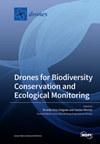U-Net Performance for Beach Wrack Segmentation: Effects of UAV Camera Bands, Height Measurements, and Spectral Indices
IF 4.4
2区 地球科学
Q1 REMOTE SENSING
引用次数: 0
Abstract
This study delves into the application of the U-Net convolutional neural network (CNN) model for beach wrack (BW) segmentation and monitoring in coastal environments using multispectral imagery. Through the utilization of different input configurations, namely, “RGB”, “RGB and height”, “5 bands”, “5 bands and height”, and “Band ratio indices”, this research provides insights into the optimal dataset combination for the U-Net model. The results indicate promising performance with the “RGB” combination, achieving a moderate Intersection over Union (IoU) of 0.42 for BW and an overall accuracy of IoU = 0.59. However, challenges arise in the segmentation of potential BW, primarily attributed to the dynamics of light in aquatic environments. Factors such as sun glint, wave patterns, and turbidity also influenced model accuracy. Contrary to the hypothesis, integrating all spectral bands did not enhance the model’s efficacy, and adding height data acquired from UAVs decreased model precision in both RGB and multispectral scenarios. This study reaffirms the potential of U-Net CNNs for BW detection, emphasizing the suitability of the suggested method for deployment in diverse beach geomorphology, requiring no high-end computing resources, and thereby facilitating more accessible applications in coastal monitoring and management.海滩残骸分割的U-Net性能:无人机相机波段、高度测量和光谱指数的影响
本研究探讨了U-Net卷积神经网络(CNN)模型在海岸带多光谱图像海滩残骸(BW)分割与监测中的应用。本研究通过“RGB”、“RGB +高度”、“5波段”、“5波段+高度”、“波段比指标”等不同输入配置,对U-Net模型的最优数据集组合进行了深入研究。结果表明,“RGB”组合具有良好的性能,BW的交叉点超过联盟(IoU)为0.42,IoU的总体精度为0.59。然而,在潜在体重的分割中出现了挑战,主要归因于水生环境中的光动态。诸如太阳闪烁、波浪模式和浊度等因素也会影响模型的准确性。与假设相反,整合所有光谱波段并没有提高模型的有效性,在RGB和多光谱场景下,添加无人机获取的高度数据都降低了模型的精度。本研究重申了U-Net cnn在生物垃圾检测方面的潜力,强调了所建议的方法在不同海滩地貌中部署的适用性,不需要高端计算资源,从而促进了海岸监测和管理中更容易获得的应用。
本文章由计算机程序翻译,如有差异,请以英文原文为准。
求助全文
约1分钟内获得全文
求助全文

 求助内容:
求助内容: 应助结果提醒方式:
应助结果提醒方式:


